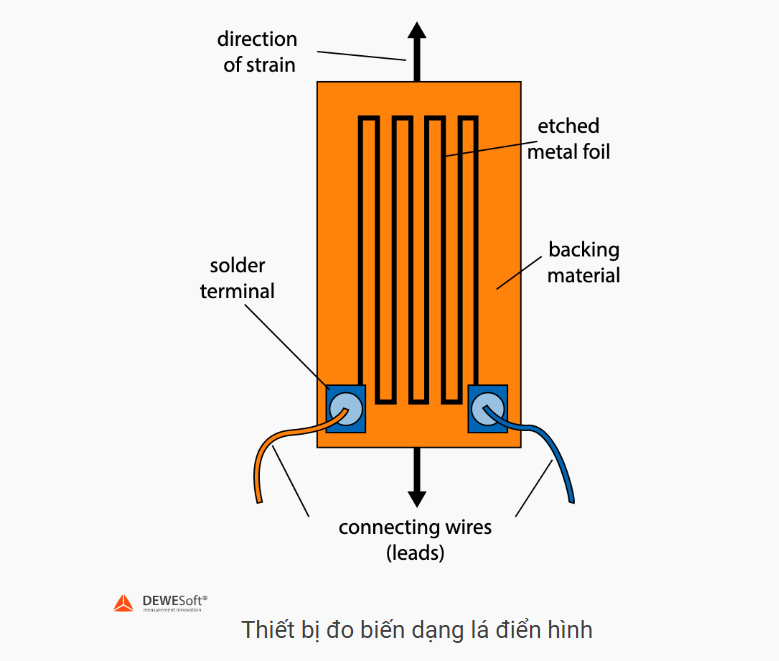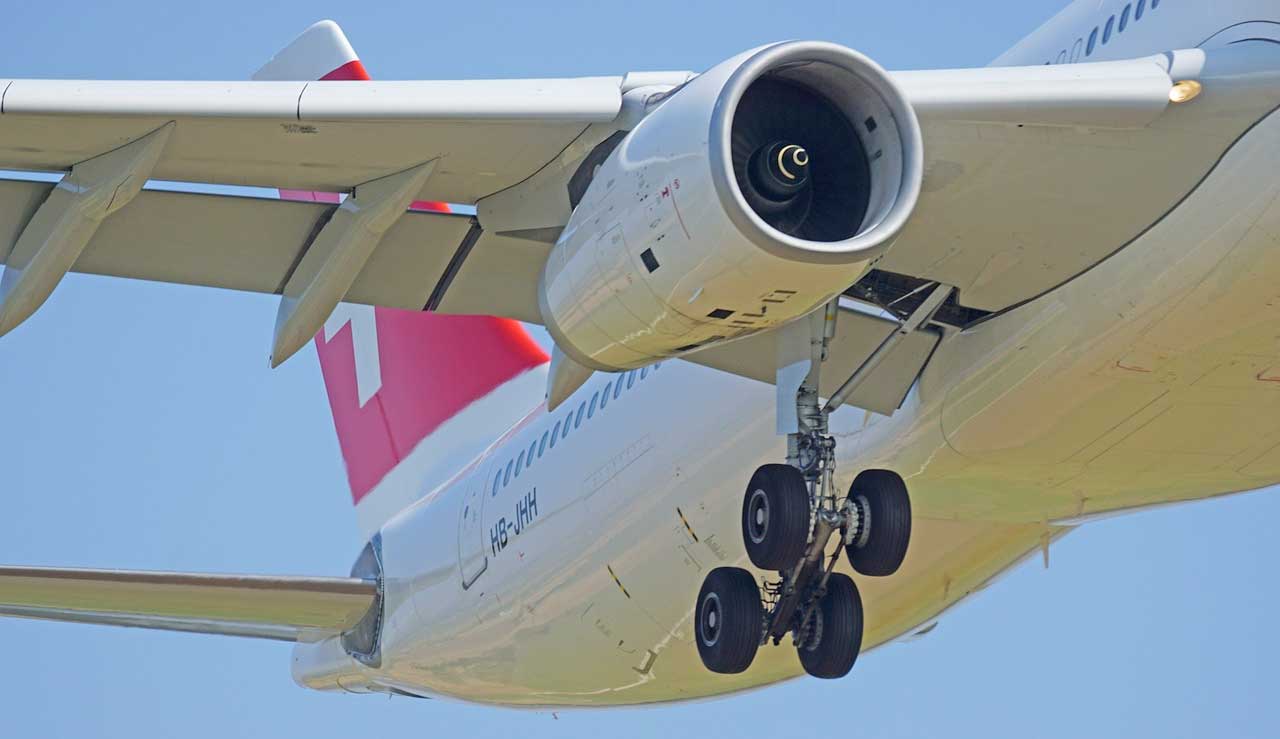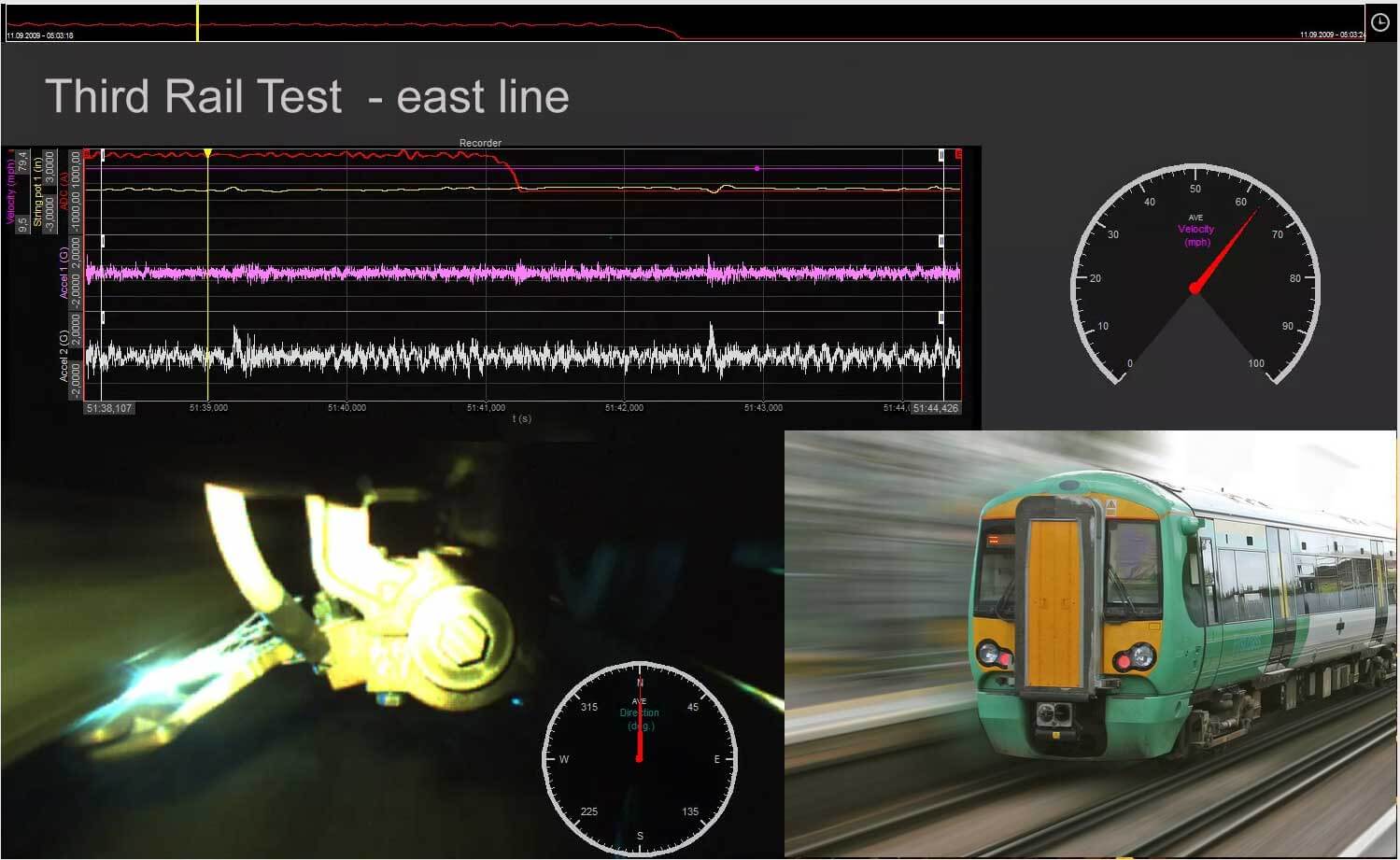30.06.2022
What is Strain Gage?
Strain gage (also known as Strain gauge) is a tension gauge sensor. Lord Kelvin discovered centuries ago that the resistance of a wire changes when it is stretched or compressed. Today's strain gauge is simply an electrical conductor arranged in a zigzag shape and attached to a flexible metal foil.
The measuring device is attached (glued) directly to the object under test. When the measuring object is bent, it creates a change in resistance in the sensor proportional to the distortion. Each strain gauge senses distortion in only one direction, so it is possible to use multiple sensors attached to a measuring object, each of which is attached in different directions of motion of the measuring object to record the bending in multiple directions of that measuring object.
The output signal of the strain gauge is routed to a dedicated signal regulator, which provides controls to "balance" the sensor before each test and amplify the sensor's small voltage output onto an output more suitable for digitization. The DAQ system digitizes the signal after it is conditioned and then displayed. store measurement results.
DAQ systems designed to collect strain gauge signals typically have at least 8 channels and sometimes up to hundreds of channels in large-scale test applications. More on that later in this article.
Application of Strain gage in industry

Weighing System:
Highway Truck Weighing System
Weighing systems in production environments
The crusher uses a tension gauge to detect sudden surge stresses and shuts down the machine if the machine gets stuck before the machine breaks down
Identical weight items such as screws, rivets, etc., are usually calculated according to their weight. They are fed into a hopper for weighing and divided overall weight by the weight of each unit to calculate quantity.
Check rotating parts:
Torque and power measurements on drive shaft types, in power plants, oil refineries, fans, turbines, etc.
Wind turbine tests:
Check the critical components:
Factory system testing:
Application in aerospace

The aircraft must be made as safe as possible. Rigorous testing is required during development and certification. Aircraft are also periodically inspected to ensure that they are structurally stable.
People think of engines first when it comes to flight safety, but there are plenty of other components that must also work perfectly, day in and day out. These include control surfaces such as flaps that allow pilots to steer the aircraft in three dimensions and transmission mechanisms that control things like equipment landed.
Every load-bearing structure on board an aircraft must be tested for stress and deformation, including:
Wings – just like tall buildings and bridges are meant to bend when subjected to external forces, airplane wings are also designed to bend. The tension measurement test ensures that the wing flexion is within the permissible specifications.
Application in the field of automotive

Each vehicle underwent extensive testing during development. This includes cars, trucks, buses and motorcycles.
The panels at the front of the car are usually designed with dozens of tension measuring devices. This allows engineers to monitor the condition of these panels in a variety of environmental conditions at various speeds and on different road surfaces.
Ứng dụng trong đường sắt

Rail Monitoring
Not only do the trains have to be inspected, but the tracks themselves also need to be inspected because they are subjected to heavy loads when heavy trains pass by at high speeds. Besides, there is the geological situation in that area and the influence of the earth's rotation.
The consequences of a train full of passengers hitting a damaged or deflected section of track would be devastating. Railway tracks are built in sections, with gaps called "expansion joints". These gaps allow for the expansion and contraction of rails over an ambient temperature range. Heat and strain sensors are usually mounted on these expansion joints and are connected to an alert system to alert train operators if a stretch of road presents with extreme conditions.
Strain gage application in marine
Whether it's a small boat on a lake or an aircraft carrier with 5000 sailors on board, it has to be tested.
Test the tension and stress of the submarine hull – imagine the pressure that the hull is subjected to at increasing depth. Boats and hulls also need to be tested to ensure that they can withstand the pressure of impact through waves and still retain a solid structure.
The impeller is also tested, as well as measuring stress, deformation and torque on the drive shaft and other rotating parts in the propulsion system.
Hulls and load-bearing structures must be tested to ensure proper rigidity and required stress resistance
Torque and power measurements on drive shafts and rotors
Application in the field of construction
Most civil engineering is designed to have a lifespan of 100 years. But this requires regular inspections because most failures occur in the last years of the structure's life. Today, many structures are being integrated with strain gauges and other sensors inside from the very beginning.
The tension measuring device can be applied on the outer surface of concrete walls and foundations. But they can also be embedded inside these structures, and the conductors are brought out through special tubes. In this case, the deformations inside the concrete can be monitored in real time by connecting an external DAQ system.
Deformation, stress, load, and force measurements are typically performed on structures subjected to critical loads, including:
Medical applications
There are many applications for Strain gague measurement in the medical and healthcare industry. Example:
They are often used in medical instruments such as kidney dialysis machines and syringe pumps to help monitor the flow rate of fluid.
Use in patient weighing and lifting systems.
Wireless gague strain can be found in CT scanners and mammography machines.
Patient locator systems used during radiation treatment
In physiotherapy applications, strain-based force sensors Gague is used to measure the force on the joints (shoulders, hips, knees, etc.).